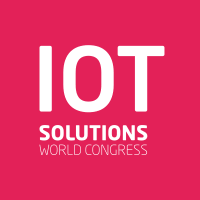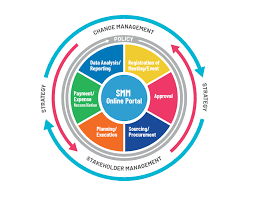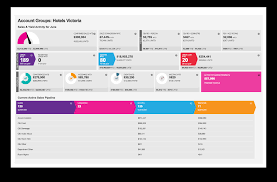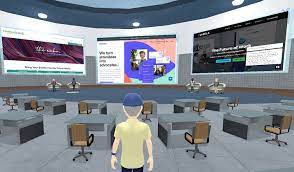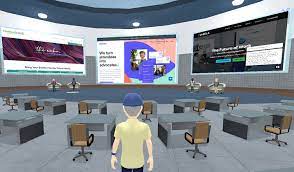IoT Solutions World Congress: Unleashing the Power of Connected Technologies
The IoT Solutions World Congress (IoTSWC) is an annual event that brings together industry leaders, experts, and innovators from around the world to explore the transformative potential of the Internet of Things (IoT). This prestigious congress serves as a platform for showcasing cutting-edge IoT technologies, sharing insights, and fostering collaboration among professionals across various industries.
At IoTSWC, attendees have the opportunity to dive deep into the realm of IoT and witness firsthand how connected technologies are revolutionizing businesses and societies. The event features an extensive exhibition area where companies showcase their latest IoT solutions, products, and services. From smart cities to industrial automation, healthcare to agriculture, every sector is represented, demonstrating how IoT is reshaping traditional practices and opening up new possibilities.
One of the key highlights of IoTSWC is its comprehensive conference program. Renowned experts take the stage to deliver insightful keynote speeches, panel discussions, and technical sessions that cover a wide range of topics related to IoT implementation and innovation. Attendees can gain valuable knowledge about emerging trends, best practices, and real-world case studies that highlight successful IoT deployments.
Moreover, IoTSWC offers ample networking opportunities for participants to connect with industry peers, potential partners, and solution providers. Engaging in meaningful conversations with like-minded professionals allows attendees to exchange ideas, explore collaborations, and stay updated on the latest advancements in their respective fields.
The event also hosts hackathons and innovation challenges that encourage developers and startups to showcase their creativity by building innovative IoT solutions within a limited timeframe. These competitions not only foster a spirit of competition but also push participants to think outside the box while addressing real-world challenges using connected technologies.
IoTSWC serves as a catalyst for driving digital transformation across industries. It acts as a bridge between technology providers and end-users by facilitating knowledge transfer and fostering collaboration. By bringing together experts from different sectors, the congress encourages cross-pollination of ideas and promotes the development of holistic IoT solutions that can address complex challenges faced by businesses and societies.
Attending the IoT Solutions World Congress is a must for industry professionals who want to stay ahead of the curve in this rapidly evolving technological landscape. It offers unparalleled opportunities to gain insights, discover new business prospects, and forge partnerships that can drive innovation and growth.
In conclusion, the IoT Solutions World Congress is a premier event that showcases the immense potential of connected technologies. By connecting professionals from diverse industries and providing a platform for knowledge sharing and collaboration, IoTSWC plays a pivotal role in shaping the future of IoT. Whether you are an industry expert, a technology enthusiast, or a business leader looking to leverage IoT solutions, this congress is an invaluable resource for staying at the forefront of this transformative wave.
7 Benefits of Attending the IoT Solutions World Congress
- Learn from experts in the field
- Connect with industry leaders
- Stay up-to-date on new developments
- Hear success stories
- Discover innovative ideas
- Networking opportunities
- Accessibility & Affordability
Drawbacks of the IoT Solutions World Congress: Exploring High Costs, Limited Accessibility, Overwhelming Content, and Lack of Networking Opportunities
- High Cost
- Limited Accessibility
- Overwhelming Content
- Lack of Networking Opportunities
Learn from experts in the field
Learn from Experts in the Field at IoT Solutions World Congress
One of the standout advantages of attending the IoT Solutions World Congress (IoTSWC) is the opportunity to learn from world-renowned experts in the field. This prestigious event brings together industry leaders, visionaries, and innovators who are at the forefront of IoT technology and implementation.
The IoTSWC conference program features a lineup of renowned speakers who share their expertise, knowledge, and real-world experiences with attendees. These experts deliver captivating keynote speeches, participate in panel discussions, and host technical sessions that cover a wide range of topics related to IoT.
By attending these sessions, participants gain valuable insights into emerging trends, best practices, and successful case studies. They can learn about the latest advancements in IoT technologies, understand how different industries are leveraging connected solutions, and explore innovative approaches to implementing IoT in their own organizations.
The expertise shared by these industry experts goes beyond theoretical concepts. They provide practical guidance on overcoming challenges, navigating complexities, and maximizing the benefits of IoT solutions. Whether it’s discussing data security concerns or exploring strategies for scalability and interoperability, these sessions offer attendees actionable takeaways that they can apply directly to their own projects.
Moreover, attending IoTSWC gives participants access to networking opportunities with these experts. Engaging in conversations with these thought leaders allows attendees to ask questions, seek advice specific to their needs, and gain a deeper understanding of current industry trends. Building connections with such knowledgeable professionals can be invaluable for personal growth and professional development.
The presence of renowned experts at IoTSWC also adds credibility to the event itself. Their participation attracts a diverse audience comprising professionals from various industries who are eager to learn from the best in the field. The collective knowledge shared by these experts creates an environment that fosters collaboration and encourages attendees to think creatively about how they can leverage IoT solutions within their own domains.
In conclusion, one of the significant advantages of attending the IoT Solutions World Congress is the opportunity to learn from world-renowned experts in the field. Their expertise, insights, and real-world experiences provide attendees with valuable knowledge and guidance for implementing successful IoT solutions. By attending their sessions and engaging in networking opportunities, participants can gain a competitive edge, expand their professional network, and stay updated on the latest trends in the ever-evolving world of IoT.
Connect with industry leaders
Connect with Industry Leaders at IoT Solutions World Congress
One of the standout advantages of attending the IoT Solutions World Congress (IoTSWC) is the unique opportunity to network with industry leaders. This prestigious event brings together CEOs, CTOs, and other top executives from major companies around the world, creating an environment conducive to meaningful connections and collaborations.
Rubbing shoulders with industry leaders can open doors to new business prospects, partnerships, and insights that can shape your organization’s future. The IoTSWC provides a platform where attendees can engage in conversations with these influential figures, gaining valuable knowledge from their experiences and expertise.
Networking with CEOs, CTOs, and other top executives allows attendees to gain a deeper understanding of market trends, emerging technologies, and successful business strategies. Their insights can provide valuable guidance for navigating the complex landscape of IoT implementation and innovation.
Moreover, connecting with industry leaders at IoTSWC offers opportunities for collaboration. By establishing relationships with key decision-makers from major companies across various sectors, attendees can explore potential partnerships that may lead to joint ventures or mutually beneficial projects. These collaborations can accelerate innovation and drive growth for all parties involved.
In addition to the knowledge-sharing aspect, networking with industry leaders also helps build credibility and visibility within the IoT ecosystem. By engaging in conversations with top executives, attendees can showcase their expertise and establish themselves as thought leaders in their respective fields. This recognition can open doors to speaking engagements, media opportunities, and further networking possibilities beyond the congress itself.
Attending IoTSWC provides a concentrated platform where industry leaders converge. It eliminates barriers that might otherwise limit access to these influential figures in a typical business setting. The congress creates an atmosphere conducive to fostering connections by bringing together like-minded professionals who are passionate about IoT technologies.
In conclusion, networking with CEOs, CTOs, and other top executives at the IoT Solutions World Congress is an exceptional opportunity for attendees seeking to expand their professional network within the IoT industry. The connections made at this event can lead to valuable partnerships, insights, and growth opportunities for individuals and organizations alike. By participating in IoTSWC, you position yourself at the forefront of industry trends and gain access to a network of influential leaders who can shape the future of your business.
Stay up-to-date on new developments
Stay up-to-date on new developments: The IoT Solutions World Congress provides a platform for exhibitors to showcase emerging technologies and products related to IoT solutions.
In today’s fast-paced world, staying up-to-date with the latest advancements is crucial for businesses and professionals. The IoT Solutions World Congress offers a unique opportunity to explore and experience cutting-edge technologies firsthand. With a diverse range of exhibitors, the event serves as a hub for showcasing innovative IoT solutions that are transforming industries.
By attending the congress, participants can witness the unveiling of new products, prototypes, and technological breakthroughs. From smart devices and sensors to data analytics platforms and cloud-based solutions, exhibitors present a wide array of offerings that demonstrate how IoT is reshaping industries such as manufacturing, healthcare, transportation, energy, and more.
Being able to see these emerging technologies in action allows attendees to gain insights into their potential applications and benefits. It provides a hands-on experience that goes beyond reading about them in articles or watching videos. This firsthand exposure enables businesses and professionals to make informed decisions about adopting new IoT solutions that can enhance their operations, improve efficiency, and drive innovation.
Moreover, the IoT Solutions World Congress encourages networking between exhibitors and attendees. Engaging in conversations with experts from various fields not only helps in understanding the showcased technologies but also opens doors for potential collaborations. Exhibitors often welcome discussions about their products’ roadmap, future developments, and integration possibilities with other systems or platforms.
By attending this congress regularly or even just once, industry professionals can ensure they are at the forefront of new developments within the world of IoT solutions. They gain access to exclusive previews of groundbreaking technologies before they hit the market. This early exposure empowers them to anticipate industry trends and adapt their strategies accordingly.
In conclusion, the IoT Solutions World Congress offers an invaluable opportunity for businesses and professionals to stay up-to-date on new developments in the field of IoT solutions. By providing a platform for exhibitors to showcase emerging technologies and products, the event enables attendees to witness firsthand the transformative power of IoT. It empowers them to make informed decisions, foster collaborations, and stay ahead of the curve in an ever-evolving technological landscape.
Hear success stories
IoT Solutions World Congress: Hear Success Stories of IoT Implementation
The IoT Solutions World Congress (IoTSWC) offers attendees a unique opportunity to gain valuable insights by listening to success stories from leading organizations that have effectively implemented IoT solutions in their businesses and industries. This pro of the congress allows participants to learn directly from those who have experienced the transformative power of connected technologies.
During the event, attendees will have access to a series of case study presentations delivered by experts from various industries. These presentations highlight real-world examples of how organizations have leveraged IoT solutions to overcome challenges, improve operations, and drive innovation. By sharing their experiences, these industry leaders provide valuable insights into the practical aspects of implementing and managing IoT projects.
Listening to success stories at IoTSWC enables attendees to understand the potential impact that IoT can have on their own businesses or industries. They can learn about the specific benefits achieved by organizations that successfully integrated connected technologies into their workflows. From increased efficiency and productivity to enhanced customer experiences and new revenue streams, these case studies demonstrate the tangible advantages of embracing IoT solutions.
Moreover, hearing success stories can inspire attendees to think creatively about how they can apply similar strategies within their own organizations. By understanding the challenges faced by others during implementation and deployment, participants can gain valuable knowledge about best practices, potential pitfalls, and strategies for overcoming obstacles on their own IoT journeys.
The case studies presented at IoTSWC cover a wide range of sectors such as manufacturing, healthcare, transportation, energy, agriculture, and more. This diversity ensures that attendees from various industries can find relevant success stories that resonate with their specific needs and objectives.
In addition to providing inspiration and practical insights, these success stories also highlight the immense potential for innovation that lies within IoT solutions. By showcasing how organizations have transformed their operations through connected technologies, IoTSWC motivates attendees to explore new possibilities within their own businesses.
Attending IoTSWC not only allows participants to hear success stories but also provides an opportunity to engage with the presenters and ask questions. This interactive element further enriches the learning experience and enables attendees to gain a deeper understanding of the challenges, strategies, and outcomes associated with IoT implementation.
In conclusion, one of the significant advantages of attending the IoT Solutions World Congress is the opportunity to hear success stories from leading organizations that have successfully implemented IoT solutions. By listening to these case studies, attendees can gain valuable insights, learn best practices, and be inspired to explore innovative ways of leveraging connected technologies within their own businesses or industries. The knowledge gained from these success stories can serve as a catalyst for driving transformation and achieving remarkable results in the world of IoT.
Discover innovative ideas
Discover Innovative Ideas at the IoT Solutions World Congress
The IoT Solutions World Congress (IoTSWC) is not only a gathering of industry leaders and experts but also a hub of innovation and inspiration. One of the significant advantages of attending this event is the opportunity to discover innovative ideas that can fuel your own projects or initiatives.
At IoTSWC, attendees are exposed to the latest trends in IoT solutions development and implementation strategies. The event showcases a wide range of cutting-edge technologies, products, and services from various industries. By exploring these exhibits and engaging in conversations with industry pioneers, attendees can gain valuable insights into how IoT is being leveraged to solve complex challenges across different sectors.
The congress features an extensive conference program where experts share their knowledge and experiences through keynote speeches, panel discussions, and technical sessions. These sessions delve into emerging trends, best practices, and real-world case studies that highlight successful IoT deployments. By attending these informative sessions, participants can gather ideas on how to apply IoT technologies in their own projects or businesses.
Moreover, the IoTSWC provides a platform for networking with professionals from diverse backgrounds. Engaging in discussions with like-minded individuals allows for the exchange of ideas and experiences. Attendees can learn from others who have implemented innovative IoT solutions or brainstorm with peers to generate fresh ideas for their own initiatives.
The vibrant atmosphere at IoTSWC fosters creativity and encourages attendees to think outside the box. The event hosts hackathons and innovation challenges where developers and startups showcase their skills by building innovative IoT solutions within a limited timeframe. Witnessing these competitions not only inspires attendees but also exposes them to new approaches and methodologies that they can apply in their own projects.
In conclusion, attending the IoT Solutions World Congress provides an excellent opportunity to discover innovative ideas that can drive your own projects or initiatives forward. By exploring the latest trends in IoT solutions development, learning from industry experts, networking with professionals from diverse backgrounds, and witnessing innovation challenges, attendees can find inspiration and gain valuable insights. Whether you are looking to enhance your existing IoT projects or kickstart new initiatives, IoTSWC is the place to be for discovering fresh ideas that can propel your success in the world of connected technologies.
Networking opportunities
Networking Opportunities: Connecting Passionate IoT Professionals Worldwide
One of the standout advantages of attending the IoT Solutions World Congress (IoTSWC) is the vast array of networking opportunities it offers. With hundreds of participants from around the globe, this prestigious event serves as an ideal platform for professionals interested in connecting with like-minded individuals who share a passion for IoT solutions development and implementation strategies.
In today’s interconnected world, building a strong network of industry peers is essential for professional growth and success. IoTSWC provides a unique environment where experts, innovators, and decision-makers gather to exchange ideas, share experiences, and explore potential collaborations.
The congress brings together professionals from various sectors such as manufacturing, healthcare, transportation, energy, and more. This diverse mix of attendees ensures that conversations are rich with insights from different perspectives and industries. By engaging in discussions with professionals who face similar challenges or have successfully implemented IoT solutions in their respective fields, attendees can gain valuable knowledge and learn from real-world experiences.
The networking opportunities at IoTSWC extend beyond formal sessions. During breaks between conference sessions or within the exhibition area, participants can engage in informal conversations with industry leaders, technology providers, startups, and potential partners. These casual interactions often lead to unexpected connections and serendipitous moments that spark new ideas or collaborations.
Furthermore, IoTSWC hosts dedicated networking events such as receptions or social gatherings where participants can relax in a more informal setting while expanding their professional network. These events create an atmosphere conducive to forging meaningful connections outside the confines of traditional conference settings.
By attending IoTSWC and actively participating in networking activities, professionals can expand their horizons beyond their immediate circles. They can tap into a global community of passionate individuals who are at the forefront of IoT innovation. This opens up possibilities for cross-industry collaborations and knowledge sharing that can drive new business opportunities or accelerate ongoing projects.
In conclusion, the IoT Solutions World Congress offers unparalleled networking opportunities for professionals interested in IoT solutions development and implementation strategies. By connecting with peers from around the world, attendees can broaden their perspectives, gain valuable insights, and establish relationships that can propel their careers and businesses forward. Whether you are seeking inspiration, looking for potential partners, or simply want to be part of a vibrant community passionate about IoT, IoTSWC is the place to be.
Accessibility & Affordability
Accessibility & Affordability: Unlocking Global Opportunities through IoT Solutions World Congress Webinars
The IoT Solutions World Congress (IoTSWC) stands out for its commitment to accessibility and affordability, offering professionals from around the globe the chance to participate in this transformative event without the need for extensive travel or exorbitant expenses. Through its online webinars, IoTSWC has made attending the congress more convenient and cost-effective than ever before.
In today’s interconnected world, physical distance should not be a barrier to knowledge sharing and collaboration. IoTSWC recognizes this and has harnessed the power of technology to break down geographical boundaries. By providing webinars as an alternative means of participation, professionals can access the event from anywhere in the world with an internet connection.
This accessibility aspect is particularly crucial for those who may face challenges attending physical events due to limited resources, time constraints, or other commitments. With webinars, professionals no longer have to worry about costly travel expenses or time-consuming logistics. They can now engage with industry leaders, gain valuable insights, and participate in discussions right from their own offices or homes.
The affordability factor further enhances the appeal of IoTSWC webinars. Attending conferences and congresses often comes with significant financial burdens – registration fees, travel costs, accommodation expenses – all of which can be barriers for many professionals. By offering webinars as an option, IoTSWC eliminates these financial barriers and opens up opportunities for a broader range of individuals to benefit from the wealth of knowledge shared at the congress.
Moreover, by making IoTSWC accessible online through webinars, the event becomes more sustainable. With reduced travel requirements, there is a positive environmental impact in terms of carbon emissions reduction. This aligns with the growing global focus on sustainability and responsible practices in all aspects of life.
The convenience and cost-effectiveness of attending IoTSWC through webinars make it an attractive option for professionals seeking to stay updated on the latest IoT trends and innovations. It enables them to tap into a global network of experts, engage in discussions, and explore potential collaborations without the usual constraints associated with physical attendance.
In conclusion, IoTSWC’s commitment to accessibility and affordability through webinars is a game-changer for professionals worldwide. By leveraging technology, this congress has made knowledge sharing and collaboration more inclusive and sustainable. Whether you are an industry expert looking to expand your network or a professional seeking to stay ahead in the IoT landscape, attending IoTSWC webinars offers an accessible and cost-effective way to unlock global opportunities.
High Cost
High Cost: A Consideration for IoT Solutions World Congress Attendees
While the IoT Solutions World Congress (IoTSWC) offers a plethora of benefits and opportunities, it is essential to acknowledge one potential downside: the high cost associated with attending the event. With tickets priced at hundreds of dollars, it may pose a financial challenge for some individuals or organizations.
The price tag of attending IoTSWC includes access to an extensive exhibition area, insightful conference sessions, networking opportunities, and the chance to explore cutting-edge IoT solutions. However, it is crucial for attendees to carefully evaluate their budget and consider the overall value they will gain from participating in this event.
For smaller businesses or startups with limited financial resources, investing in tickets for IoTSWC might require careful consideration. It is important to assess whether the potential benefits of attending—such as networking with industry leaders, gaining valuable insights, and exploring emerging IoT technologies—outweigh the financial investment.
To mitigate the impact of high costs, individuals and organizations can explore various strategies. Early bird discounts or group rates may be available, providing an opportunity to secure tickets at a more affordable price. Additionally, considering the long-term benefits that attending IoTSWC can bring—such as potential partnerships or business growth—can help justify the expense.
It is also worth noting that while attending IoTSWC in person offers a unique experience and direct interaction with exhibitors and speakers, there may be alternative ways to access similar knowledge and insights. Some conferences offer virtual attendance options or provide recorded sessions post-event at a reduced cost or even free of charge. Exploring these alternatives can help individuals who are unable to attend due to budget constraints still benefit from the information shared during IoTSWC.
Ultimately, weighing the advantages against the cost is crucial when considering attendance at any conference or event. While IoTSWC undoubtedly offers immense value in terms of industry knowledge and networking opportunities, prospective attendees should carefully assess their financial situation and evaluate the potential return on investment before committing to the event.
In conclusion, the high cost of attending the IoT Solutions World Congress is a factor that individuals and organizations should consider when deciding whether to participate. By evaluating their budget, exploring discount options, and assessing long-term benefits, attendees can make an informed decision about whether the investment aligns with their goals and priorities.
Limited Accessibility
Limited Accessibility: Language Barrier at IoT Solutions World Congress
While the IoT Solutions World Congress (IoTSWC) offers a wealth of knowledge and networking opportunities, one notable con is the limited accessibility for attendees who do not speak English fluently. Many discussions, presentations, and sessions are conducted solely in English, which can pose a challenge for non-English speakers to fully engage and participate in the event.
Language barriers can hinder the ability of attendees to grasp the nuances of technical discussions, understand keynote speeches, and actively engage in panel sessions. This limitation may result in missed opportunities for valuable insights and collaborations with industry experts from around the world.
Recognizing this issue, it is important for IoTSWC organizers to consider implementing measures that promote inclusivity and facilitate participation for non-English speakers. One potential solution could be providing simultaneous translation services or offering dedicated sessions in languages other than English. This would allow attendees to fully comprehend and contribute to the discussions, regardless of their language proficiency.
Additionally, organizers could explore alternative formats such as interactive workshops or hands-on demonstrations that rely less on verbal communication alone. These formats can bridge language gaps by emphasizing visual aids, practical exercises, and interactive experiences that transcend language barriers.
Furthermore, IoTSWC could encourage presenters to provide translated materials such as handouts or slides in multiple languages. This would enable attendees to review content at their own pace and better understand the key concepts being discussed.
By addressing the limited accessibility caused by language barriers, IoTSWC can create a more inclusive environment that fosters global collaboration and knowledge sharing. It would allow professionals from diverse backgrounds to fully participate in discussions and benefit from the wealth of expertise present at the congress.
In conclusion, while IoTSWC offers an exceptional platform for exploring IoT solutions and connecting with industry leaders, it is essential to acknowledge its limitation regarding accessibility for non-English speakers. By implementing strategies to overcome language barriers, IoTSWC can ensure that all attendees have equal opportunities to engage, learn, and contribute to the vibrant IoT community.
Overwhelming Content
Overwhelming Content: Navigating the Sea of Information at IoT Solutions World Congress
The IoT Solutions World Congress (IoTSWC) is an exceptional event that brings together industry leaders, experts, and innovators from around the globe to explore the transformative potential of the Internet of Things (IoT). While this congress offers a wealth of valuable insights and knowledge, one potential drawback is the overwhelming amount of content presented within a relatively short period.
With numerous keynote speeches, panel discussions, technical sessions, and an extensive exhibition area showcasing the latest IoT solutions, attendees may find themselves inundated with information. It can be challenging to absorb everything and process it effectively during the duration of the event.
However, being aware of this potential challenge can help attendees make the most out of their IoTSWC experience. Here are a few strategies to navigate through the overwhelming content:
- Plan Ahead: Before attending IoTSWC, review the event schedule and identify sessions or topics that align with your specific interests or professional goals. Prioritize those sessions and allocate your time accordingly. By having a clear plan in place, you can focus on acquiring knowledge in areas that are most relevant to you.
- Take Breaks: With back-to-back sessions and a bustling exhibition area, it’s crucial to give yourself breaks throughout the day. Use these breaks to reflect on what you’ve learned so far and allow yourself time to process information before moving on to the next session or exhibit. Taking short breaks will help prevent mental fatigue and enhance your ability to retain information.
- Engage in Discussions: The IoTSWC provides ample networking opportunities where you can engage in conversations with industry peers, experts, and solution providers. By discussing key takeaways from sessions or sharing insights with others, you can reinforce your understanding of complex topics while gaining different perspectives.
- Leverage Post-Event Resources: IoTSWC often provides post-event resources such as presentation slides, recordings, and supplementary materials. Take advantage of these resources to revisit sessions or explore topics that you may have missed during the event. This allows you to delve deeper into specific areas of interest at your own pace.
While the overwhelming amount of content at IoTSWC can initially seem daunting, it is essential to approach the event with a strategic mindset. By planning ahead, taking breaks, engaging in discussions, and leveraging post-event resources, attendees can effectively manage the abundance of information and extract maximum value from their IoTSWC experience.
Remember, IoTSWC is a unique opportunity to gain insights into the latest IoT trends and innovations. With a thoughtful approach, attendees can navigate through the sea of information and emerge with a wealth of knowledge that can drive their professional growth in the exciting world of IoT.
Lack of Networking Opportunities
Lack of Networking Opportunities at IoT Solutions World Congress: Exploring Alternatives
While the IoT Solutions World Congress (IoTSWC) offers a wealth of knowledge and innovation, it’s important to acknowledge that networking opportunities may be relatively limited compared to other tech conferences or events that focus on specific industries or topics.
Networking is an essential aspect of any professional gathering, as it provides a platform for individuals to connect, exchange ideas, and explore potential collaborations. Although IoTSWC does offer networking opportunities, they may not be as extensive as some attendees might expect.
One contributing factor to this limitation is the diverse range of industries represented at IoTSWC. With participants from various sectors such as healthcare, manufacturing, energy, and transportation, it can be challenging to find individuals with specific interests or expertise in a particular field. This broad spectrum can make it more difficult for attendees to connect with like-minded professionals who share their specific industry focus.
Additionally, the sheer size of the event can sometimes make it challenging for attendees to engage in meaningful conversations and establish lasting connections. With numerous exhibitors and thousands of participants in attendance, finding the right people to network with can feel overwhelming.
However, it’s important to note that while IoTSWC may have its limitations in terms of networking opportunities, there are alternative ways to overcome this challenge. One approach is to leverage online platforms and social media channels associated with the event. These digital platforms allow attendees to connect before, during, and after the congress. Engaging in virtual discussions and participating in online forums can help facilitate networking even when face-to-face interactions are limited.
Another strategy is to seek out smaller satellite events or industry-specific gatherings that coincide with IoTSWC. These ancillary events often provide a more focused environment where participants can connect with individuals who share their specific interests or work within their target industry. Exploring these additional networking avenues can enhance the overall experience and create more meaningful connections.
While acknowledging the potential limitations, it’s important to recognize that IoTSWC remains a valuable event for gaining knowledge, exploring emerging technologies, and staying updated on the latest trends in IoT. The congress provides a unique opportunity to learn from industry experts, witness innovative solutions, and gain insights into diverse sectors.
Ultimately, attendees should approach IoTSWC with realistic expectations regarding networking opportunities. By exploring alternative networking strategies and actively engaging with online platforms and satellite events, participants can maximize their networking potential and make the most of their experience at this prestigious congress.




